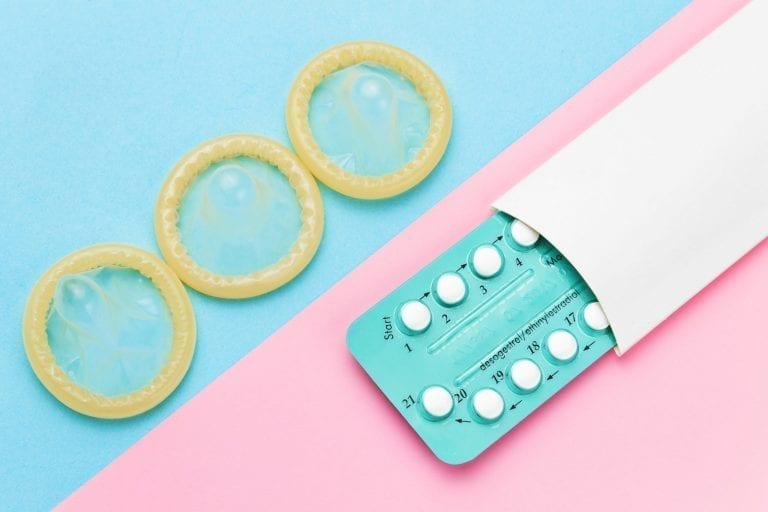You may be wondering why you should think about birth control while you’re pregnant. There are so many other things to learn about related to birth, breastfeeding, and baby care! Of course, that’s all very important, but so is your future family planning.
How many children would be in your ideal family? How long should you wait after you have your baby to get pregnant again? Can you get pregnant during breastfeeding, or in the first few months after baby’s birth? How soon after birth can you use birth control?
These are questions for discussion with your pregnancy care provider in your third trimester. There may be birth control options available to you immediately after baby’s birth, so if you wait until your postpartum visit to have this discussion, you may miss that opportunity.
Whether you’ve had an easy or challenging pregnancy, at some point soon you will have to make the decision as to whether you will have another child, and if so – when? It’s important to know the risks of having another pregnancy too soon. The standard recommendation is to wait 18 months from birth to your next conception. This is considered to be the safest length of time to ensure a healthy mom and baby. It’s why it’s important to think about birth control while pregnant.
Of course, every woman is different, and your health care provider may recommend or suggest another timeline based on your fertility, economic issues, availability of a partner, or illness. Having a short inter-pregnancy interval may increase your risk for anemia, preterm birth, low birth weight, and preeclampsia.
If you’ve had a cesarean birth, having another pregnancy too soon may also increase your risk of rupturing your uterus. Therefore, making plans to use birth control you’re comfortable with is important when it comes to planning your family and safely spacing pregnancies.
Can I get pregnant when I am breastfeeding or right after I have my baby?
This is a common question, and the simple answer is yes! If you’re exclusively breastfeeding, you may not be ovulating, so conception could be more challenging. However, it’s recommended to not rely solely on breastfeeding to prevent pregnancy as ovulation may occur as early as 4-6 weeks postpartum.
Once you have been given the all-clear from your health provider to resume sexual activity, you should consider yourself fertile. This is a great reason to talk with your healthcare provider about birth control whilst pregnant, so you’ll know what method you’d like to use, breastfeeding or not.
SEE ALSO: How to Find the Best Birth Control Post-Pregnancy
What birth control is safe after giving birth?
Most methods of birth control are safe for use right after birth. Non-hormonal birth control including barrier methods such as condoms, a diaphragm, or the copper IUD (ParaGard) are safe, and won’t interfere with lactation. Progesterone-only methods including birth control pills that only contain progesterone, progesterone IUDs (Mirena, Skyla, Kyleena and Liletta), the implant (Nexplanon), and birth control injection (Depo Provera), are all safe postpartum and most providers agree that using progesterone will not affect breastfeeding.
Ask what time frame for starting birth control is safe for you. Some methods, such as natural family planning or predicting fertile times and avoiding intercourse during those times, may be challenging if you are not ovulating or menstruating regularly while breastfeeding.
SEE ALSO: Long-term Birth Control Choices
What about getting birth control before leaving the hospital or birthing center after I have my baby?
Yes, this is possible—and one less thing for you to worry about! However, some insurers may not cover this benefit right after birth. Check with your health plan, as well as your state’s rules. Often, contraception needs to be pre-authorized by your insurance company in advance, so that the device is ready for you at your birthing location. Receiving the Depo Provera injection right after birth may be easier to obtain than a long-acting reversible contraception (LARC) such as an IUD or the implant.
In recent years, immediate postpartum insertion of LARC has gained in popularity and availability. This means that after your placenta is delivered, an IUD can be manually inserted into your uterus by your provider. This works if you have a vaginal birth or a cesarean. Or, the implant can be inserted into your arm in the first few hours after birth.
When it comes to an IUD inserted right away, there is some concern that it may fall out more easily, versus having it inserted at 6 weeks postpartum. This could be due to your uterus being larger right after your delivery, increased bleeding/lochia that is normal, as well as postpartum uterine cramps. But, talk with your provider, because it may be easier to have a long acting method already in place right after your birth. If this is an option for you, planning and approval are necessary, so this is another reason to consider and discuss all birth control options while you are still pregnant.
Don’t hesitate to ask questions, especially about birth control while pregnant. Remember – you have the power and responsibility to plan your family, and your health care provider can help.






Comments are closed.